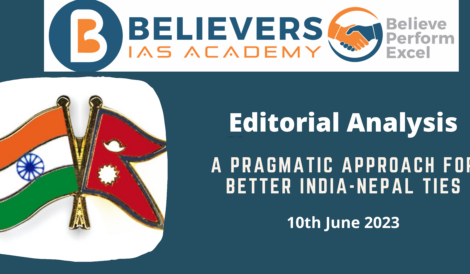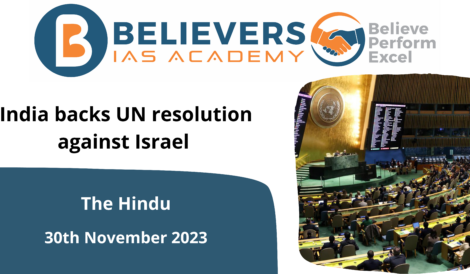The Paradox Of BRICS, It’s New Pathway
Context:
During the Cold War, the Non-Aligned Movement (NAM) and G-77 were at their peak. They still exist, however, they later lost their significance. Even though the South Asian Association for Regional Cooperation (SAARC) summits were finished in 2014, the Secretariat continues to be active. The Association of Southeast Asian Nations (ASEAN) continues to operate despite significant policy differences between China and Myanmar, using reams of paper to publish lengthy communiqués.
BRICS (Brazil, Russia, India, China, and South Africa)
- Formation and Expansion: Jim O’Neill of Goldman Sachs first used the acronym “BRIC” in 2001 to describe the developing economies of Brazil, Russia, India, and China. In 2010, South Africa joined the group, transforming it into BRICS. Despite having become a more unified geopolitical bloc, their original goal was to showcase investment opportunities.
- Size and Population: The BRICS countries account for around 26.7% of the earth’s land area and 41.5% of the world’s population, with a combined size of 39,746,220 km2 and a population of about 3.21 billion.
- Economic Power: In terms of population, area, and GDP (PPP), Brazil, Russia, India, and China are among the greatest nations in the world. These nations are regarded as either established or rising superpowers, and their total nominal GDP represents around 26.6% of the world’s GDP.
- Annual Summits: To discuss and coordinate multilateral policy, the BRICS governments hold annual summits. China hosted the 14th BRICS summit in July 2022, which was the most recent gathering.
- Geopolitical Rivalry: The G7, which is made up of the top advanced economies, frequently sees the BRICS as a geopolitical opponent. The New Development Bank, the Contingent Reserve Arrangement, the BRICS payment system, the BRICS Joint Statistical Publication, and the BRICS basket reserve currency are only a few of the BRICS’s competing projects that have been launched.
- Mutual Benefit and Non-Interference: The BRICS countries handle bilateral relativised one of equality, mutual benefit, and non-interference.
Points to Ponder:
- Multilateral groupings and their erratic trajectories are discussed in the passage. It highlights the Non-Aligned Movement (NAM), G-77, SAARC, ASEAN, and BRICS as examples of varied coalitions.
- Although prominent during the Cold War, the NAM and G-77 have since become irrelevant. They yet remain, demonstrating the lasting nature of such formations.
- The last SAARC summit was in 2014, although the Secretariat is still in operation, indicating a gap between the official summits and the organization’s continued administrative tasks.
- Despite differences in policy between China and Myanmar, ASEAN continues to operate and release lengthy communiqués, demonstrating the bureaucratic nature of the group.
- BRICS, an association of rising economies originally made up of Brazil, Russia, India, and China, later added South Africa to become BRICS. In the last 13 years, it has held 14 summits, demonstrating consistent activity.
- BRICS challenged the dominance of the West and projected a non-Western perspective on regional and global issues, advancing multipolarity.
- In terms of the economy, BRICS started projects like the New Development Bank, the Contingent Reserve Arrangement, and programmes for member-to-member trade and investment cooperation.
- The IBSA trio within BRICS anticipated support from China and Russia for their application to join the UN Security Council, but this support did not manifest, leaving the group disappointed and creating diplomatic difficulties.
- Internal conflicts within BRICS were exacerbated by China’s rise and military aggression, Russia-China collaboration, South Africa’s economic problems, and Brazil’s political changes.
- BRICS has lost some of its original lustrous, but 19 nations are still eager to join the alliance. This is explained by several factors, including China’s goal to establish a big forum for the worldwide South, its desire to strategically increase its worldwide influence, its fear of missing out on a visible club, and its restricted alternatives for joining other organisations.
- South Africa’s upcoming BRICS conference may cover expansion and its requirements. There are three possibilities: massive expansion, restricted entrance, or the acceptance of only five new members.
- India supports slow and criterion-based BRICS growth, highlighting the importance of agreement among the current members.
- The section indicates that due to legal commitments relating to the ICC, the BRICS leaders may be unable to physically meet, which could lead to a virtual summit.
- The leaders are asked to think about enhancing BRICS and resolving internal issues while also noting the possibility that newly admitted members may try to modify the group’s name.
Similar Topics:
Strengthen G20 Cooperation During Modi Visit





